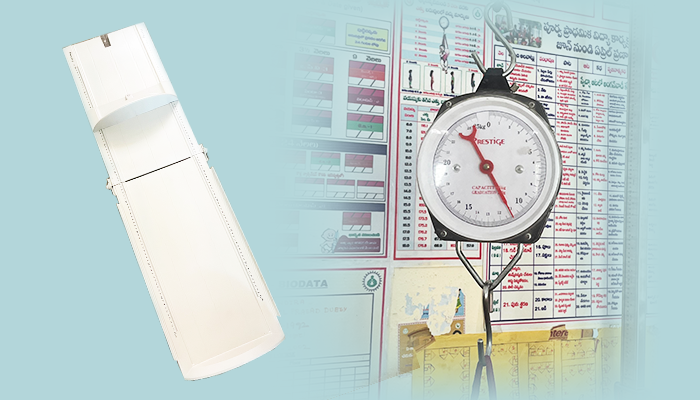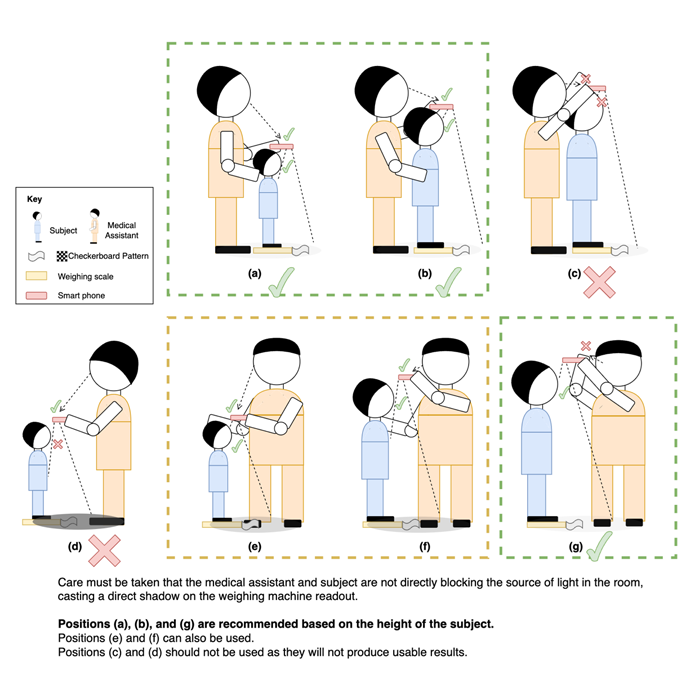The simple solution uses a smart phone for faster and automatic assessment of children’s growth parameters.
Data is king, yes. But if it’s quality is moot then uneasy lies the head that wears such a crown. One of the biggest advantages of automating data collection is the reduction of human errors leading to an improvement in the overall data quality itself. A Bihar-based NGO, i-Saksham has turned to AI to drive its various initiatives focused on women empowerment. One such is its community engagement program that involves high school-educated women who undergo leadership and gender training. These “edu-leaders”, as they are called, help mobilise out-of-school children, and provide social-emotional and life skills to children in schools and anganwadis.
Anthropometry For Malnutrition Tracking
Anganwadi centres – launched in 1975 to provide child and maternal care – are an important component of India’s public healthcare system. Alongside early or preschool education for rural children, they also play a crucial role in their nutrition and health. Since malnourished children may never reach their full scholastic potential, children’s physical growth, including height and weight is constantly monitored in these centres. These non-invasive measurements of the body, also known as anthropometry measurements, provide a valuable assessment of nutritional status. For instance, if a child’s height is low for his age, as per a standardised growth chart, then it’s referred to as stunting, or if he displays low weight for age, he is labelled underweight. Wasting is another condition when a low weight-for-height is observed.
The Need For Auto Measurements
“Existing methods of recording these measurements are completely manual and prone to human errors. Besides, there are instances of the measuring scales being broken or damaged affecting accuracy. In such scenarios, the Anganwadi workers resort to eye-balling the child’s height and weight in the records. But in order to track growth progress, a rough guesstimate does not work,” states Dr. Arjun Rajasekar, an applied researcher with the Raj Reddy Center for Technology and Society (RCTS). According to him, an automated data entry process not only reduces the subjectivity but also eases the workload on the centres while simultaneously equipping them with an auditing feature. When the NGO approached RCTS for a tech-based solution, a computer vision-based tool was proposed. The basic idea is to tackle the current issues related to manual growth measurement with minimal to no additional hardware requirement other than a smartphone.

How It Works
There are 2 setups where this solution can work with a web app. In the first one, the Anganwadi worker holds the smartphone over the child’s head and two images are taken; one of the weighing scale reading and the other of the region directly in front of the scale (on the floor). In the second scenario, when the child is standing against a wall with a height chart stuck on it, the smartphone is used to take a picture of the child as well as of the weighing scale readout. The images are then analysed to derive the height and weight measurements. These measurements are in turn compared with standard growth charts to generate malnutrition estimates. What’s helpful is that the app has pictograms guiding the officials on how to position themselves and the child before taking the photographs. It also displays appropriate warnings on the screen based on the malnutrition estimate and transmits the same as a message to parents and the concerned local officers.



 Corporate Backing and Current Status
Corporate Backing and Current Status
The current UI for the web app is being planned in both English and Hindi. “We are also exploring the feasibility of using 3D anthropometry, i.e, 3D reconstruction of subjects using 2D images,” says Arjun. According to him, this is part of a larger effort by the Raj Reddy Center to create an AI solution for reducing morbidity and mortality in newborns via automatic anthropometry measurements. For the project with i-Saksham, the Center has teamed up with Centific who has funded 18 lakhs as part of their CSR initiative towards the first phase of the project. This phase includes data collection to train and refine the AI model, prototype delivery of the initial version and its pilot deployment on ground. “The aim of the first phase is to collect data on 400 children and also to gauge user feedback. Once the initial feedback is in, we’ll use it to fine tune the computer vision algorithms for height and weight measurements,” states Arjun.


Sarita Chebbi is a compulsive early riser. Devourer of all news. Kettlebell enthusiast. Nit-picker of the written word especially when it’s not her own.


Next post